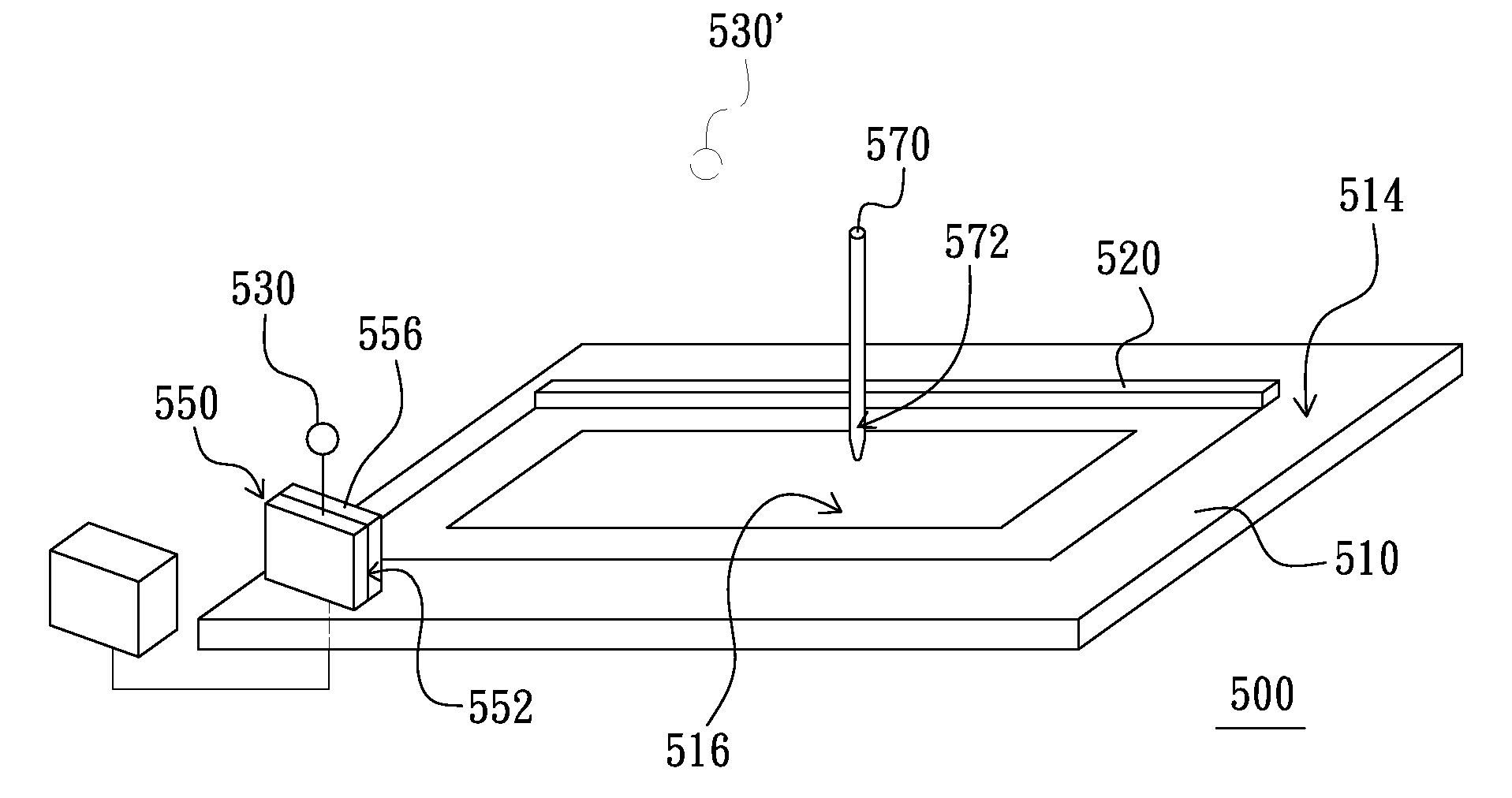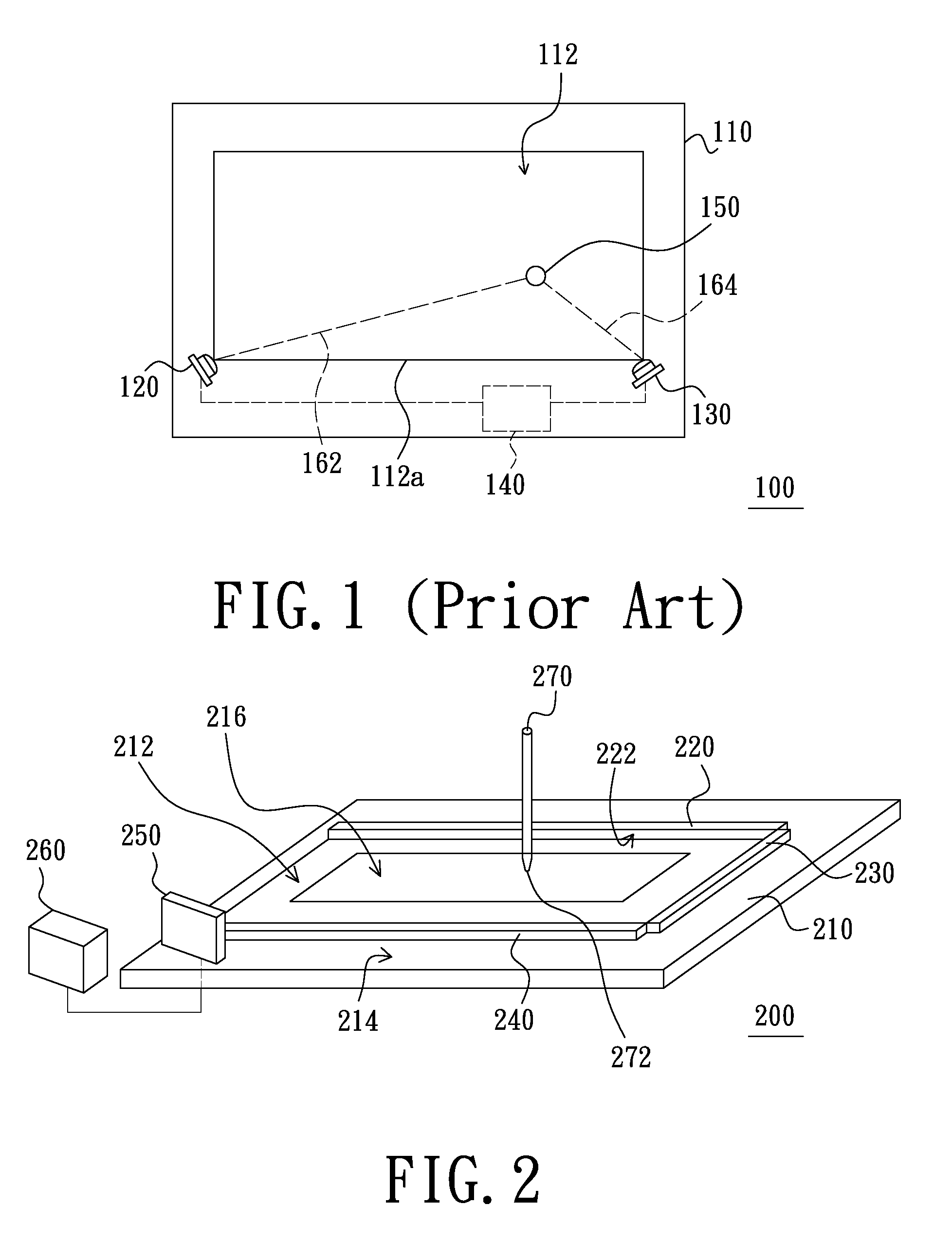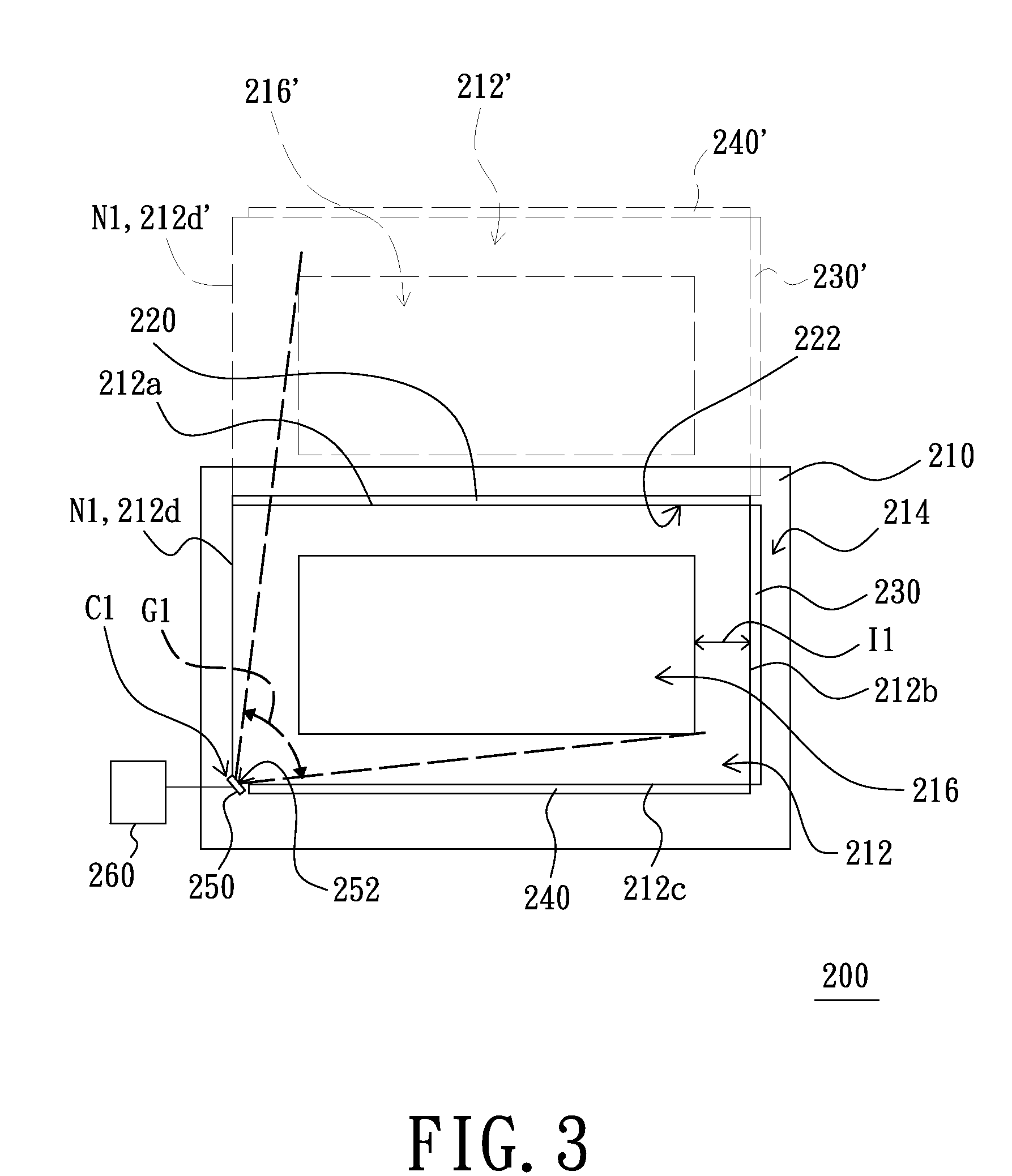Sensing System
a technology of sensing system and touch system, which is applied in the direction of mechanical pattern conversion, optical conversion of sensor output, instruments, etc., can solve the problems of relatively high production cost of each of the touch system disclosed in the patents, and achieve the effect of low production cos
- Summary
- Abstract
- Description
- Claims
- Application Information
AI Technical Summary
Benefits of technology
Problems solved by technology
Method used
Image
Examples
first embodiment
[0034]FIG. 2 is a schematic three-dimensional view of a sensing system of a first embodiment of the present invention. FIG. 3 is a schematic top view of the sensing system of FIG. 2 in operation. Referring to FIGS. 2 and 3, the sensing system 200 is adapted to sensing a pointer 270 and calculating the location of the pointer 270 (seeing the following detailed description). The sensing system 200 includes a panel 210, a reflective element 220, a first linear light source 230, a second linear light source 240, an image sensor 250 and a processor 260. The panel 210, such as a whiteboard or a touch screen, has a first plane 214, a first area 212 located at the first plane 214 and a third area 216 located at the first plane 214. The third area 216 is located in the first area 212. The first area 212 is quadrangular, such as a rectangle. Furthermore, the first area 212 has a first boundary 212a, a second boundary 212b, a third boundary 212c and a fourth boundary 212d which are connected i...
second embodiment
[0044]FIG. 6 is a schematic top view of a sensing system of a second embodiment of the present invention. Referring to FIGS. 3 and 6, the difference between the sensing system 300 of the present embodiment and the sensing system 200 of the first embodiment lies in that two of the boundaries of the third area 316 of the panel 310 of the sensing system 300 coincide with the third boundary 312c and the second boundary 312b of the first area 312 respectively. To sum up, an interval I2 is located between the third area 316 and the first area 312 and the interval I2 is L-shaped.
third embodiment
[0045]FIG. 7 is a schematic top view of a sensing system of a third embodiment of the present invention. Referring to FIGS. 3 and 7, the difference between the sensing system 400 of the present embodiment and the sensing system 200 of the first embodiment lies in that the third area 416 of the panel 410 of the sensing system 400 is quadrangular and not a rectangle.
PUM
 Login to View More
Login to View More Abstract
Description
Claims
Application Information
 Login to View More
Login to View More - R&D
- Intellectual Property
- Life Sciences
- Materials
- Tech Scout
- Unparalleled Data Quality
- Higher Quality Content
- 60% Fewer Hallucinations
Browse by: Latest US Patents, China's latest patents, Technical Efficacy Thesaurus, Application Domain, Technology Topic, Popular Technical Reports.
© 2025 PatSnap. All rights reserved.Legal|Privacy policy|Modern Slavery Act Transparency Statement|Sitemap|About US| Contact US: help@patsnap.com



